This site is supported by our readers. We may earn a commission, at no cost to you, if you purchase through links.
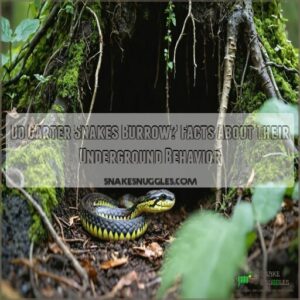
Instead of digging their own holes, they’ll happily move into an abandoned rodent burrow, crack in the soil, or even a cozy rock crevice.
These spots provide shelter from predators, extreme temperatures, or a safe place to hibernate during winter.
You might spot one slipping underground during summer for some shade or moisture, too.
So, while they’re not master diggers, garter snakes certainly know how to settle in! Curious what animals they share their spaces with or how to spot their hideouts?
Table Of Contents
- Key Takeaways
- Garter Snake Burrowing
- Do Garter Snakes Burrow
- Snake Hole Identification
- Garter Snake Burrow Usage
- Managing Garter Snake Burrows
- Garter Snake Underground Activity
- Ecological Impact of Burrowing
- Frequently Asked Questions (FAQs)
- Can garter snakes burrow?
- How to find a garter snake den?
- What does a snake hole look like in a yard?
- What kind of snakes burrow in the ground?
- Do garter snakes dig holes?
- Do garter snakes shed?
- Where do garter snakes live?
- Do garter snakes eat grubs?
- Do garter snakes hibernate together?
- Can garter snakes live together?
- Conclusion
Key Takeaways
- Garter snakes don’t dig their own burrows but adapt by using abandoned holes, cracks, or crevices for shelter.
- They seek underground spaces to avoid predators, regulate body temperature, and hibernate during winter.
- Look for smooth-edged holes, shed skins, or droppings to identify snake activity in a yard.
- These snakes play a key role in natural pest control by feeding on insects and small rodents, benefiting ecosystems.
Garter Snake Burrowing
You might be surprised to learn that garter snakes don’t actually dig their own burrows, but they’re skilled at using ones left behind by other animals.
They seek underground shelter for safety, temperature regulation, and seasonal hibernation.
Natural Habitat Preferences
Garter snakes thrive in diverse environments, but they’re picky about a few things.
Preferred terrain includes meadows, woodlands, and areas near water sources.
They love dense vegetation that offers shade and hiding spots.
Climate factors matter too—they avoid extremes.
Sharing habitats with other animals is common.
Their snake natural habitat includes underground tunnels, but they don’t always dig them themselves, often preferring areas with dense vegetation and water sources.
Seasonal Burrowing Patterns
As temperatures change, garter snakes follow seasonal burrowing habits to survive.
Their brumation patterns include:
- Spring Emergence: Garter snakes leave underground tunnels as warmth returns, seeking food and activity.
- Summer Shelter: Snakes retreat to cool crevices when heat peaks.
- Winter Hibernation: In colder months, they gather in dens, conserving energy below the frost line.
Reasons for Seeking Underground Shelter
Sometimes, snakes need quiet spaces like we crave cozy blankets.
Underground shelters offer predator avoidance, temperature regulation, and moisture retention. They’re essential during habitat scarcity or brumation needs.
Underground shelters provide safety, stable temperatures, and moisture—nature’s perfect hideaway for garter snakes during brumation or harsh conditions.
Snake burrowing habits often repurpose existing burrows instead of digging. Think of it as crashing someone else’s underground tunnels—efficient, right?
| Reason | Benefit | Example |
|---|---|---|
| Predator Avoidance | Escape from predators | Using rodent burrows |
| Temperature Regulation | Maintain body heat | Avoiding extreme weather |
| Moisture Retention | Prevent dehydration | Moist soil for brumation needs |
Depth and Duration of Burrowing
Regarding snake burrowing habits, garter snakes don’t actually dig their own burrows but rely on pre-existing ones.
These can reach about 80cm deep, providing a safe spot for snake hibernation behavior during cold months.
Seasonal variation plays a key role, as hibernation length typically spans from October to April, with soil preference influencing chosen garter snake habitat.
Do Garter Snakes Burrow
Believe it or not, garter snakes don’t actually dig their own tunnels.
They’re burrowing opportunists, making use of existing snake holes, rodent burrows, or natural crevices, blending perfectly with their habitat.
Burrowing benefits include safety from predators and stable temperatures for survival.
Regional burrowing varies, with snakes adapting to local environments.
Their diet connection is key—these burrows often lead to rich hunting grounds.
Captive burrowing behavior also happens when using deep substrates, mimicking nature.
These burrowing snakes impressively thrive underground!
Snake Hole Identification
When spotting a hole in your yard, it’s natural to wonder if a snake might be nearby.
By learning to identify smooth-edged entrances, tracks, and other clues, you’ll know if a reptile has made itself at home underground.
Characteristics of Snake Holes
Snake holes have distinct traits worth noting.
They’re typically small, circular, and smooth-edged—a result of the snake’s movement.
You’ll find them near foundations, in grass, or even tree roots.
Want clues? Look for fresh tracks, droppings with white deposits, or shed skins.
These spots aren’t random; they’re shelters snakes use for safety and survival underground!
Distinguishing Snake Holes From Rodent Holes
Snake holes are typically round with smooth edges, while rodent holes often feature jagged edges and nesting debris.
You’ll notice raised edges around snake burrow entrances and cleaner surroundings. Rodent tracks include claw marks, but snake tracks show wavy, S-shaped patterns.
Rodent burrow identification can be a tricky task.
Dropping analysis also helps—look for dark, cylindrical droppings with white caps near suspected snake underground tunnels for confirmation.
Indicators of Occupancy
If you’re wondering whether a hole is home to a slithering resident, look for these signs:
- Fresh tracks leading to or from the entrance hint recent use.
- Shed skins nearby confirm it’s a snake’s hangout.
- Snake droppings with chalky white streaks or prey remnants suggest active snake tunnels or dens.
Smooth edges help distinguish snake holes.
Snakes often use holes for protection from predators.
Garter Snake Burrow Usage
You’d be surprised how resourceful garter snakes are in terms of finding shelter underground.
They’ll often use abandoned burrows from other animals, adapting them to meet their needs for safety and warmth.
Types of Burrows Used
Garter snakes don’t dig their own burrows, but they make clever use of natural dens, rodent burrows, and rock shelters.
These spots provide safety and warmth, meeting their habitat needs perfectly.
Snake holes often hint at their resourceful and adaptable burrowing behavior, and root systems and manmade structures, like cracks or foundations, also serve as snake den sites.
Adaptation to Existing Burrows
Garter snakes are resourceful when using existing burrows. They don’t dig their own but take advantage of snake holes and dens created by others. Why?
- Burrow Size and Sharing: Perfectly snug spaces for shelter.
- Predator Avoidance: Easy escape routes from threats.
- Microclimate Benefits: Stable temperatures for warmth or coolness.
Smart survival tactics, right?
Common Animals Whose Burrows Garter Snakes Use
You might be surprised at how adaptable garter snakes are in regards to burrowing.
They often take over rodent burrows or share spaces with amphibians. Mammals, like ground squirrels, frequently provide ready-made shelters in grassy habitats.
Insect burrow usage is rarer but possible, while bird interactions with snake holes are less common, highlighting snakes’ creativity with dens.
These snakes, like other burrowing species, are considered underground ecosystem engineers, and are notable for their ability to utilize various environments, showcasing their adaptability and role as underground ecosystem engineers.
Signs of Garter Snake Occupancy
Spotting signs of a garter snake in a burrow can be pretty straightforward if you know where to look.
Keep an eye out for these clues:
- Shed skins near smooth-edged holes, hinting at recent snake shedding.
- Snake droppings with dark smears and white deposits showing close activity.
- Fresh tracks leading to holes, confirming movement in the garter snake habitat.
Managing Garter Snake Burrows
If you want to manage garter snake burrows, it’s important to know when their presence might cause issues.
By understanding their behavior and choosing humane methods, you can protect your property while respecting these beneficial reptiles.
Assessing The Need for Snake Removal
When considering snake removal, think about property risk and family safety.
Snake holes near foundations or frequented spaces warrant action. A professional inspection helps confirm if snakes dig there or if they’re using existing burrows.
Legal considerations, like protected species laws, may apply.
Humane relocation guarantees snake prevention while respecting wildlife. Prioritize safe, effective solutions for snake exclusion.
Humane Methods to Discourage Burrowing
You don’t need to harm snakes to keep them out.
Try these humane methods:
- Natural deterrents: Sprinkle sulfur-based repellents or plant lemongrass around problem areas.
- Habitat modification: Keep grass short and remove debris like woodpiles.
- Exclusion techniques: Cover burrows with wire mesh and seal foundation cracks.
Effective methods include using various repellent options.
These snake control tactics guarantee safety without disrupting nature’s balance.
Creating Snake-friendly Habitats
To create snake-friendly habitats, provide Safe Water Sources and Native Plantings for food and cover.
Add Basking Spots like flat stones, and guarantee Shelter Variety with logs or brush piles.
Understanding garter snake behavior, including their use of snake dens for winter shelter, aids snake conservation efforts.
Many options exist for garter snake housing.
| Element | Purpose | Example | Benefits | Considerations |
|---|---|---|---|---|
| Safe Water Sources | Hydration and prey attraction | Small ponds or fountains | Enhances ecosystem support | Maintain cleanliness |
| Native Plantings | Hiding spots and food | Local shrubs or grasses | Supports biodiversity | Avoid invasive species |
| Basking Spots | Thermoregulation | Flat rocks or wood logs | Aids digestion and mobility | Guarantee partial shade |
| Shelter Variety | Safety and nesting | Log piles or burrows | Reduces stress and predation | Rotate placement |
| Predator Control | Protect snakes from threats | Avoid rodenticides | Maintains population balance | Impact on other wildlife |
Predator Control helps garter snakes thrive.
Professional Snake Relocation Services
Professional snake services guarantee safe, stress-free relocation while following relocation legality.
Experts use proper handling techniques to protect both you and the snake.
Here’s what to expect:
- Inspection: Identify snake species and habitat suitability.
- Removal Process: Use humane snake removal services.
- Cost Factors: Prices vary by location.
- Prevention: Effective snake deterrents and prevention strategies keep them from returning.
Garter Snake Underground Activity
You might be surprised to learn how active garter snakes are underground throughout the year.
From seeking shelter in summer to gathering in communal dens during winter, their underground habits are all about survival and comfort.
Spring Emergence From Winter Hibernation
As temperatures rise, garter snakes leave their snake winter shelter with renewed energy.
Post-brumation behavior kicks in as they bask in sunlight exposure to warm up.
Their snake denning behavior often shifts sharply, driven by the mating season and habitat change.
Prey availability also influences where they settle next, ensuring survival after months of hibernation in communal dens.
Summer Foraging and Temporary Shelter
As summer heats up, garter snakes kick their foraging behavior into high gear, chasing prey like earthworms and small insects, which thrive in warm months.
You’ll often find them seeking shelter in cool, shaded spots to avoid direct sun.
These adaptable snake habitats highlight their knack for balancing summer diet needs with heat avoidance, reflecting fascinating snake ecology and behavior, and showcasing their ability to thrive in various conditions with adaptability.
Fall Preparation for Brumation
As autumn cools, garter snakes prepare for brumation by selecting safe winter dens.
Their burrowing instincts help regulate temperature, ensuring survival. They increase food consumption to build energy reserves and remain hydrated before retreating underground.
The brumation timeline begins when temperatures drop, prompting snakes to find sheltered spaces, like abandoned burrows, for hibernation. It’s nature’s way of preparing for winter’s grip.
Winter Hibernation in Communal Dens
As temperatures drop, garter snakes head to communal dens, or hibernacula, to escape harsh winters.
Garter snakes retreat to communal dens, braving winter together in shared shelters for warmth and survival beneath the frost line.
These shared spaces, often old burrows or rocky outcrops, offer warmth and safety.
Communal denning helps with temperature regulation and predator avoidance, increasing survival rates.
Garter snakes conserve energy by minimizing underground burrowing, waiting in hibernation until spring emergence brings warmer days and new activity.
They achieve this by slowing their metabolic and heart rate to conserve energy.
Ecological Impact of Burrowing
You mightn’t think a snake’s burrowing could shape an ecosystem, but it plays a key role in improving soil health and nutrient cycling.
By sharing spaces with other animals, garter snakes also help maintain balance in the food chain and control pests naturally.
Role in Soil Aeration and Nutrient Cycling
Garter snakes don’t dig their own holes, but they still impact soil health as ecosystem engineers. Their movement and waste support soil aeration and nutrient distribution.
Plus:
- They regulate earthworm populations, balancing microbial activity.
- Snakes control pests like grubs.
- Decomposition rates improve with snake waste.
- Snake habitat promotes biodiversity.
- Snake holes foster natural ecosystems’ health.
They also help in natural pest control, reducing the need for pesticides, which is a form of natural pest control and supports soil health.
Interactions With Other Burrowing Animals
Snake holes aren’t always exclusive to snakes—they often share burrows with other animals like rodents or amphibians.
This shared space can lead to burrow competition or clever burrow modification by snakes adapting to existing tunnels.
Predator avoidance sometimes forces garter snakes to share these shelters, showcasing how their snake behavior links to a larger ecosystem impact while adjusting their snake habitat to ensure predator avoidance.
Influence on Local Ecosystem Balance
When garter snakes burrow, they play a quiet but essential role in maintaining ecosystem health.
By controlling prey populations like insects and rodents, they balance local biodiversity.
Their diet regulates food chains, preventing trophic cascades.
Plus, snake predators benefit from their presence.
This natural pest control showcases how snake behavior has a surprising yet essential ecological impact.
Garter snakes in riparian zones are also affected by habitat destruction, which highlights the importance of preserving their natural habitats and understanding their role in maintaining biodiversity.
Benefits of Garter Snakes for Pest Control
You mightn’t realize it, but garter snakes play a big role in keeping your garden thriving.
Their diet includes pesky insects, larvae, and even rodents like mice, providing natural pest control.
By reducing the rodent population and controlling insects, they help maintain garden ecosystem health. Plus, fewer pests mean less need for pesticides, which benefits everyone, including the environment.
Frequently Asked Questions (FAQs)
Can garter snakes burrow?
Ever wondered where garter snakes hide when they’re not out basking?
These snakes are skilled at using existing burrows or crevices for shelter.
While they don’t dig their own, they’re great at adapting burrowed spaces.
How to find a garter snake den?
Look for garter snake dens in warm, hidden spots like rock piles, logs, or beneath foundations.
Check for smooth-edged holes, shed skins, or droppings nearby.
Early spring or late fall increases your chances of finding them, as these are complete concepts for optimal discovery.
What does a snake hole look like in a yard?
A snake hole in your yard typically looks circular with smoother edges, about the size of a coin to two inches wide.
Fresh tracks, shed skins, or snake droppings nearby indicate recent activity.
What kind of snakes burrow in the ground?
You’ll find several snakes that burrow, including garter snakes, rat snakes, and kingsnakes.
These snakes dig or use existing holes to find prey or escape predators.
Their hidden homes keep them safe and cozy underground.
Do garter snakes dig holes?
Have you ever wondered if garter snakes dig their own holes?
They don’t; instead, they use existing burrows from rodents or natural cracks for shelter.
Think of them as opportunistic renters, not homebuilders!
Do garter snakes shed?
Yes, garter snakes shed their skin periodically to grow, just like upgrading a wardrobe.
You’ll notice the shed skin near where they live or burrow as a sign of their healthy, ongoing growth.
Where do garter snakes live?
You’ll typically find garter snakes in meadows, forests, marshes, and near water sources like ponds.
They also hang out in vacant lots or urban areas, seeking shelter under rocks, logs, or in cozy underground burrows.
Do garter snakes eat grubs?
Imagine spotting a garter snake in your garden.
While garter snakes munch on worms, frogs, and insects, they don’t typically eat grubs.
Their diet relies on soft-bodied prey that’s easy to swallow whole.
Do garter snakes hibernate together?
Garter snakes hibernate together in groups, often sharing dens with dozens or even hundreds of their kind.
It’s like a snake sleepover, helping them stay warm and safe through the chilly winter months.
Can garter snakes live together?
Birds of a feather might flock together, but garter snakes can peacefully cohabitate too.
They’re non-territorial and thrive in groups, especially during brumation or breeding seasons.
Just provide enough space and hiding spots for harmony.
Conclusion
Think of garter snakes as skilled tenants, not architects—they don’t truly burrow but thrive by adapting to ready-made underground spaces.
Whether slipping into abandoned rodent holes or crevices, they seek shelter for shade, brumation, or moisture.
If you’re wondering, “Do garter snakes burrow?” the answer lies in their opportunistic nature rather than digging abilities.
By cohabiting with other animals and influencing ecosystems, these snakes quietly contribute to soil health and pest control, blending seamlessly into nature’s design.
- https://srelherp.uga.edu/snakes/thasir.htm
- https://www.livescience.com/44072-garter-snake.html
- https://ufwildlife.ifas.ufl.edu/water_moccasin_watersnake_comparison.shtml
- https://irma.nps.gov/DataStore/Reference/Profile/2302293
- https://www.fairfaxcounty.gov/soil-water-conservation/garter-snakes-gardeners-best-friend

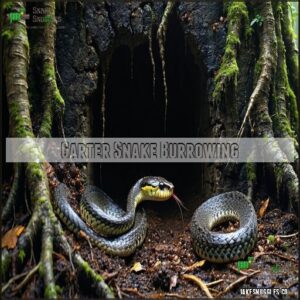
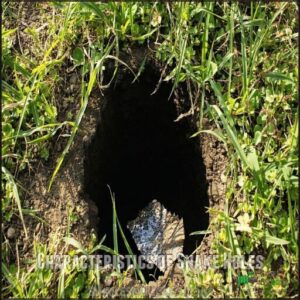
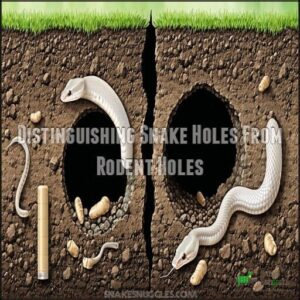
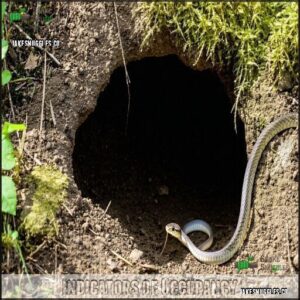
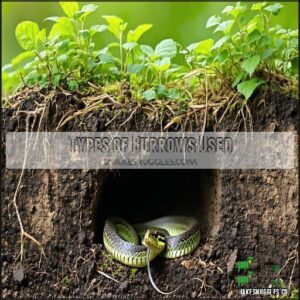
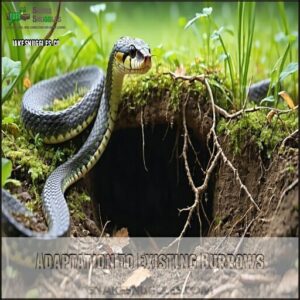

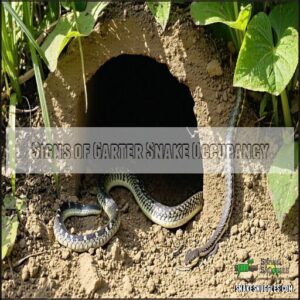




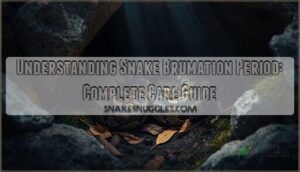


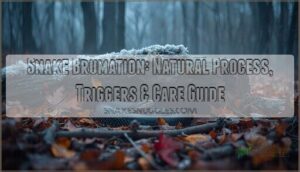

Lavender
September 3, 2025 at 03:03 PM
Really loved this article! The way you explained seasonal flowers is very helpful. I’ve also prepared a list of flowers name in Hindi for readers who prefer local names.